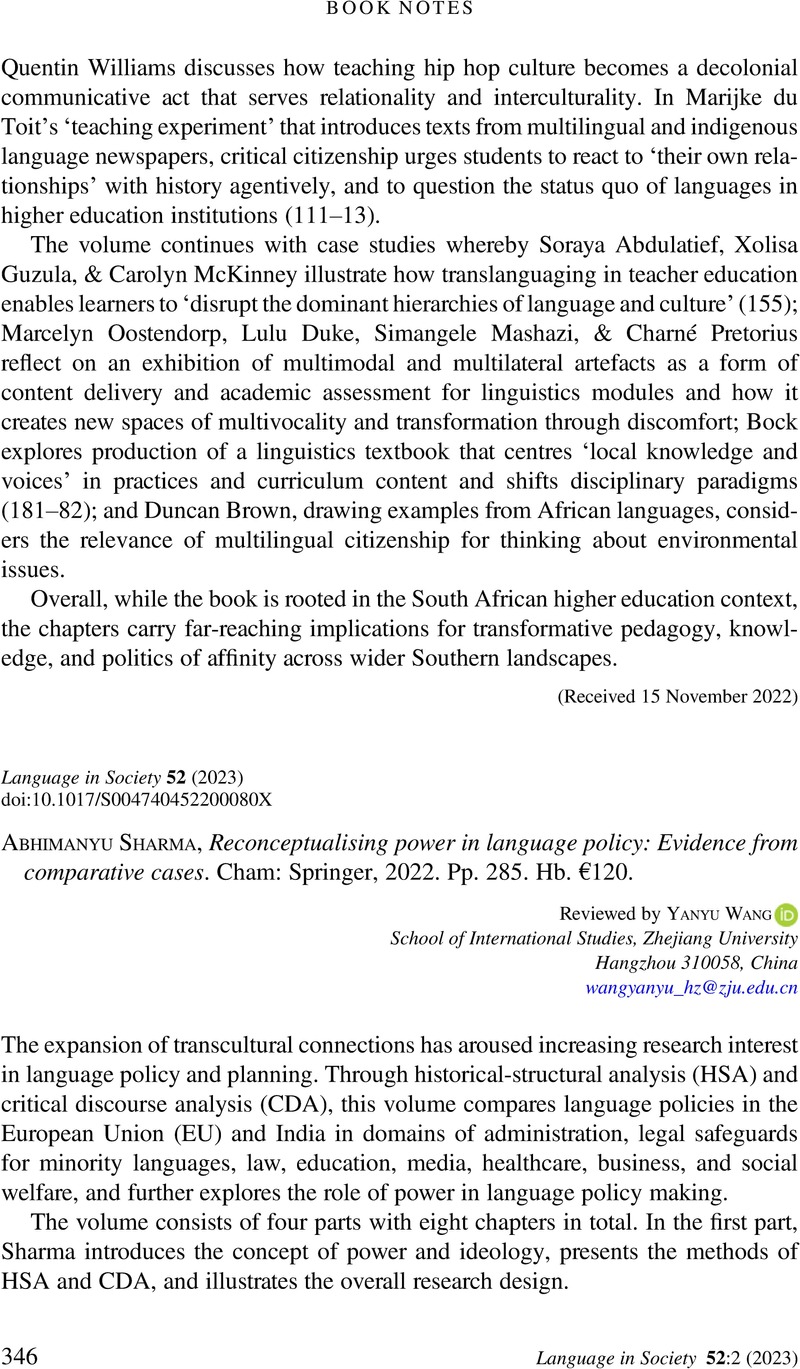No CrossRef data available.
Article contents
Abhimanyu Sharma, Reconceptualising power in language policy: Evidence from comparative cases. Cham: Springer, 2022. Pp. 285. Hb. €120.
Review products
Abhimanyu Sharma, Reconceptualising power in language policy: Evidence from comparative cases. Cham: Springer, 2022. Pp. 285. Hb. €120.
Published online by Cambridge University Press: 27 April 2023
Abstract
An abstract is not available for this content so a preview has been provided. Please use the Get access link above for information on how to access this content.

- Type
- Book Notes
- Information
- Copyright
- Copyright © The Author(s), 2023. Published by Cambridge University Press



